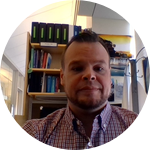About This Project
By filling in the missing gaps present in geologic record, we can reconstruct past environmental conditions. This can be used to gain insight into the current climate threats today. No time in the past better mirrors current environmental conditions than the End-Permian. We intend to sample the Permian Triassic Boundary (PTr), of the Mino-Terrane, located in Central Japan to gain a better understanding of global conditions during the PTr. and verify results generated from Mount Jesmond.
Ask the Scientists
Join The DiscussionWhat is the context of this research?
Mount Jesmond, British Columbia and the Mino Terrane are the only two known paleo-seamounts recording deposition in the largest and fully open PTr ocean. Sediments deposited on these sea-mounts are more likely to record global ocean paleoenvironmental conditions due to the lack of continental influences during marine sediment deposition. Over the last year I have done extensive work on the paleoenviromental reconstruction of Mount Jesmond here at the University of Massachusetts Boston. Extensive work on the Paleontology for the Mino Terrane has been done (Sano et al, 2010). I hope to expand on this work using geochemical proxies to determine environmental conditions, such as primary productivity, temperature, and oxygenation. Thus verifying the results found from the Mount Jesmond site.
What is the significance of this project?
The proposed research has broad implications for our understanding of and capacity to predict and mitigate impacts of future climate change on ocean systems. Moreover, it provides unique opportunities to integrate earth systems approaches to the reconstruction of our planet’s deep past. Given the increased focus on future climate impacts, particularly on oceans, the proposed research will fill a critical knowledge gap and allow us to more accurately speak to how the ocean changed across the most significant extinction in our Earth’s history and how these changes influence our understanding of predicted future changes.
What are the goals of the project?
The primary goal of this project is to procure samples from the Mino Terrane, in Central Japan. By doing this we insure that knowledge stored in the rock record is not lost. Human and natural factors threaten the resolution at which samples can be collected. We intend to collect high resolution samples to analyse at the University of Massachusetts Boston where we will then publish our findings.
Budget
The sample location is located in the rural countryside outside of Nagoya, Japan so an AWD SUV or small truck will be required to get to our destination due to the mountainous terrain and gear required for extraction. Also, the hiring of a guide who is familiar with the area, will help insure locating sampling location quickly and accurately. Lodging will be necessary because we estimate collection of samples will take approximately two weeks to ensure we obtain enough samples to provide the high resolution data we hope to gain from this section.
Meet the Team
Affiliates
Joseph Brouillet
At University of Massachusetts Boston I have worked on two research projects one of which I am a leading author and the other a coauthor, I was able to learn and then apply my knowledge to all of the following. Prepared whole rock samples for homogenization in the Spex® ball mill, removing any rock that may have been compromised by weathering after deposition. Learned how to analyze using Spectro Benchtop, Energy Dispersive X-ray Fluorescence (ED-XRF). To obtain major elemental values including the use of USGS standards to monitor accuracy of the ED-XRF and other instrumentation. Properly perform digestions to prep and run samples for solution-based analysis on the inductively coupled plasma mass spectrometry (ICP-MS) to obtain trace elemental composition. Completing forty hours of run time experience and several training sessions on the ICP-MS. Gained training in clean room procedures and prepped solution-based samples in the clean room. Prep and ran samples on the Gas Bench isotope ratio mass spectrometry (GB-IRMS) and the elemental analyzer (EA-IRM). This process allowed us to determine the total organic and inorganic carbon, stable carbon isotopic composition (delta13C). have become familiar with marine sediment proxies used to identify paleoenvironmental conditions during deposition. including Calcium Associated Sulfate (CAS), Degree of Pyritization (DOP), and Chromium Reduced Sulfur.
Lab Notes
Nothing posted yet.
Additional Information
Geochemical records and resultant paleoenvironmental reconstructions garnered
from temporal and spatial analysis of these sites is all the more critical if
we are to accurately understand the rate and intensity of climate change prior
to and following the end-Permian extinction. The records preserved at Mount
Jesmond and the Mino Terrane provide the best possible opportunity to reconstruct global open ocean conditions.
Project Backers
- 0Backers
- 0%Funded
- $0Total Donations
- $0Average Donation
